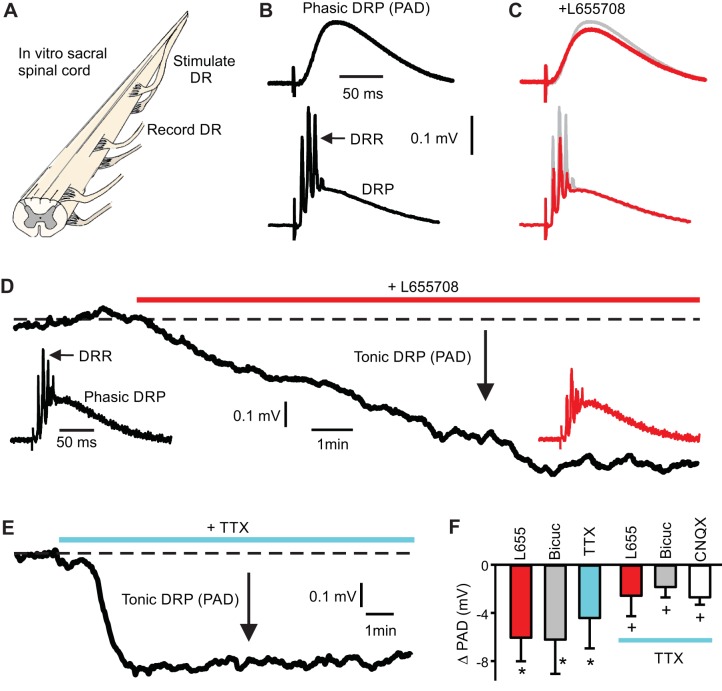Fig. 8.
Extrasynaptic α5GABAA receptors contribute to a tonic primary afferent depolarization (PAD), assist antidromic spikes, and are partly activated by a TTX-resistant GABA leak. A: extracellular recording from cut central end of an S4 dorsal root (DR) in grease very close to the cord, to observe the compound potentials from many afferents. B: dorsal root stimulation [Ca DR; 2 × threshold (T)] evoked a dorsal root potential (DRP) corresponding to phasic PAD in Fig. 5. Sometimes this PAD appeared alone (top), but more often it appeared with a compound action potential riding on the DRP (bottom), which correspond to spikes evoked by PAD (dorsal root reflex; DRR). C–D: blocking α5GABAA receptors with L655708 (0.1 µM) did not change phasic PAD (DRP) but hyperpolarized the afferents (reduced tonic DRP; tonic PAD) and reduced the DRR (n = 7). E: blocking spike-mediated synaptic activity with high-dose tetrodotoxin (TTX; 2 µM; n = 9) also hyperpolarized the afferents. F: overall, blocking GABA receptors with L655708, bicuculline (50 µM, n = 5) or gabazine (30 µM, n = 3) reduced tonic PAD computed from the reduction in DRP, as did TTX. Bicuculline and gabazine data combined (and abbreviated Bicuc). Both drugs also eliminated the phasic PAD (DRP). After TTX application, subsequent application of L655708, bicuculline or glutamate receptor blockers (CNQX and APV; 10 µM and 50 µM; abbreviated CNQX) further reduced tonic PAD in the presence of TTX (n = 9, 5 and 5, respectively). Error bars SD; *significantly different, P < 0.05.

